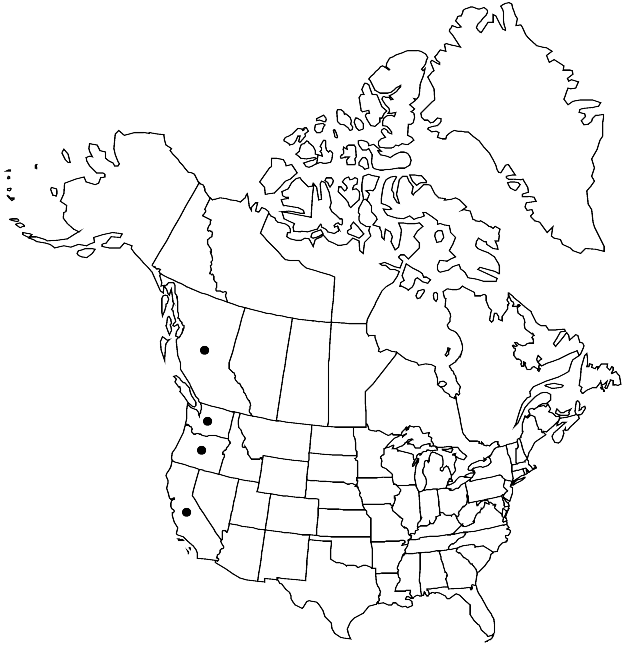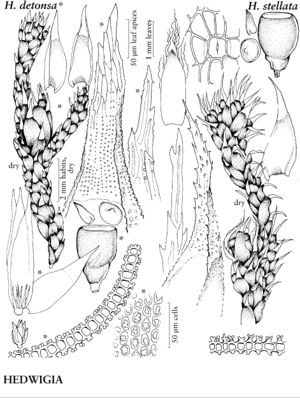Difference between revisions of "Hedwigia stellata"
J. Bryol. 18: 144, figs. 1 – 2. 1994.
FNA>Volume Importer |
FNA>Volume Importer |
Revision as of 22:00, 16 December 2019
Leaves 1.5–2.5 mm; margins recurved to mid leaf, plane mid leaf, erect to incurved in acumen, teeth in apex sharply, narrowly spinose, smooth; apex wide-spreading to squarrose when dry, broad, hyaline, acumen broad-based, 1/5–1/3(–1/2) leaf length, shallowly to deeply channeled, extreme apex flat or sometimes twisted; medial and distal laminal cells with papillae 1 (or 2), large, stalked, strongly, irregularly branched, branches of unequal lengths, especially on abaxial surface; laminal cells in hyaline area with papillae large, spinose, intermixed with smaller papillae; apical cell long-linear, sharply pointed, 120–175(–200) µm, smooth, 1-papillose on one margin, or 2-papillose and appearing 2-fid at tip. Perichaetia with leaves plane to weakly concave, margins long-ciliate distally, especially at apex. Vaginula sparsely pilose. Calyptra naked to sparsely pilose.
Phenology: Capsules mature spring.
Habitat: Dry boulders, rock, open areas, outcrops in grassy woodlands, on cultivated plum trees, coastal areas
Elevation: low to moderate elevations (0-1300 m)
Distribution

B.C., Calif., Oreg., Wash., South America (Chile), Europe (Denmark, Italy, Norway, Portugal, Spain, Sweden, United Kingdom), Asia (Kazakhstan), Atlantic Islands (Faroe Islands, Iceland).
Discussion
The marginal teeth in the hyaline leaf apices of Hedwigia stellata display the same characters as the apical cell: generally sharply pointed and narrow, with an occasional papilla; in H. ciliata the teeth are broader and often irregularly covered with scattered papillae, especially on their tips. Hedwigia stellata is common in California only in the San Francisco and Los Angeles areas (W. R. Buck and D. H. Norris 1996). The chlorophyllose, generally yellow-brown boundary between the body of the leaf and the hyaline apex is often irregular with short longitudinal lines of pigmented and non-pigmented cells juxtaposed, resulting in a jagged transverse line. In many leaves, the ultimate laminal cells are somewhat darker in coloration just at this boundary. This is true also in specimens of H. detonsa.
Selected References
None.
